#Beatrice of Savoy
Text
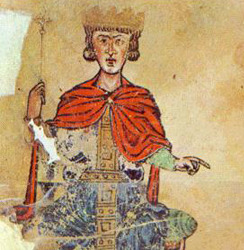
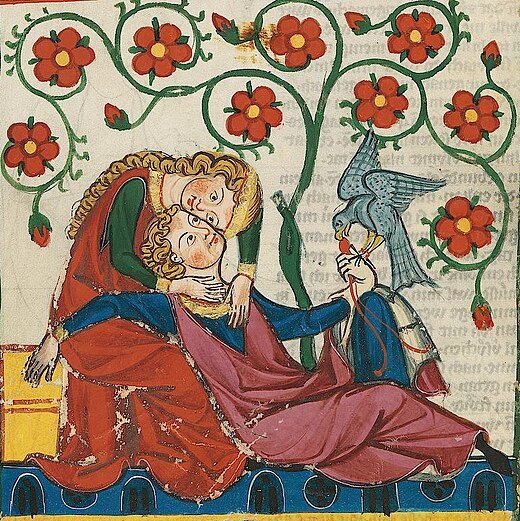






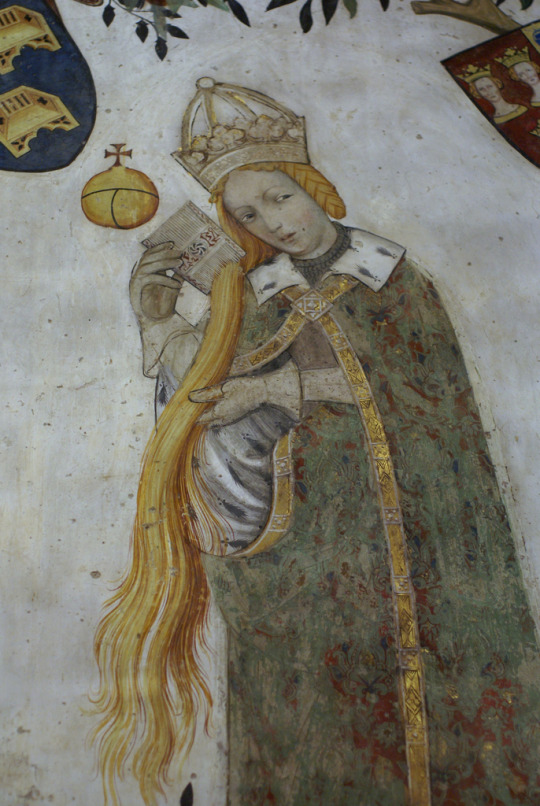
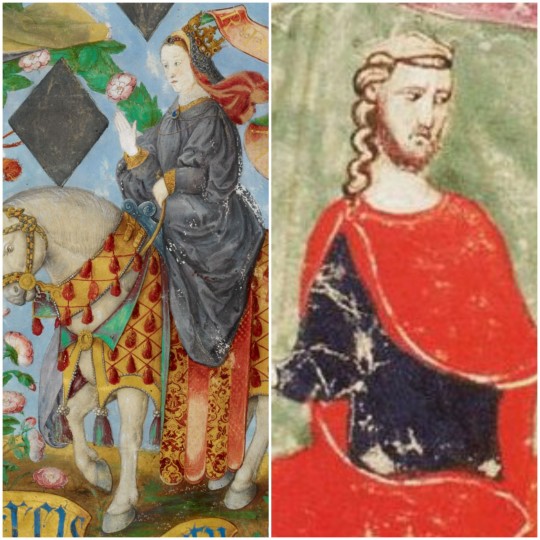
The Bastard Kings and their families
This is series of posts are complementary to this historical parallels post from the JON SNOW FORTNIGHT EVENT, and it's purpouse to discover the lives of medieval bastard kings, and the following posts are meant to collect portraits of those kings and their close relatives.
In many cases it's difficult to find contemporary art of their period, so some of the portrayals are subsequent.
1) Manfred I of Sicily (1232 – 26 February 1266), son of Holy Roman Emperor Frederick II and Bianca Lancia
2) His parents, Holy Roman Emperor Frederick II (1194 – 1250), son of Constance I of Sicily and Holy Roman Emperor Frederick I; with Bianca Lancia (c. 1210 – c. 1246/1248), daughter of Bonifazio d'Agliano
3) His brother, Conrad IV of Germany ( 1228 – 1254), son of Holy Roman Emperor Frederick II and his wife Isabella II of Jerusalem
4) His nephew, Conradin (25 March 1252 – 29 October 1268), son of Conrad IV and his wife Elisabeth of Bavaria
5) His brother, Henry VII of Germany (1211 – 1242), son of Holy Roman Emperor Frederick II and his wife Constance of Aragon
6) His brother, Enzo of Sardinia ( c. 1218 – 1272), son of Holy Roman Emperor Frederick II and Adelaide
7) His wife, Beatrice of Savoy (1223 – 1259), daughter of Amadeus IV of Savoy and his wife Marguerite of Burgundy
8) His daughter with his wife Helena Angelina Doukaina, Beatrix of Sicily (1260 –1307)
9) His daughter with his wife Beatrice of Savoy, Constance II of Sicily (c. 1249 – 1302); with her husband Peter III of Aragon (c. 1239 –1285), son of James I of Aragon and his wife Violant of Hungary
#jonsnowfortnightevent2023#asoiaf#a song of ice and fire#day 10#historical parallels#medieval bastard kings#echoes of the past#bastard kings and their families#manfred i of sicily#holy roman emperor frederick ii#bianca lancia#conrad i of sicily#conradin#conrad ii of sicily#margaret of sicily#henry ii of sicily#enzo of sardinia#beatrice of savoy#beatrix of sicily#constance ii of sicily#peter iii of aragon#canonjonsnow
13 notes
·
View notes
Photo

Beatrice of Savoy (before 4 March 1223 – 10 May before 1259) was a daughter of Amadeus IV, Count of Savoy and his first wife Marguerite of Burgundy. She was a member of the House of Savoy by birth and by her first marriage she was Marchioness consort of Saluzzo.
4 notes
·
View notes
Text
Marguerite of Provence, Queen of France
Marguerite of Provence, Queen of France
Marguerite of Provence from a fifteenth century manuscript
Raymond-Berengar V, Count of Provence, married Beatrice of Savoy in 1219. Their eldest daughter Marguerite was born in the spring of 1221 in Forcalquier, and they would have three more daughters, all of whom would become queens. Marguerite married Louis IX of France, Eleanor married Henry III of England, Sanchia became queen of the…
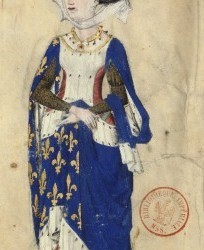
View On WordPress
#Beatrice of Provence#Beatrice of Savoy#Blanche of Castile#Charles of Anjou#Count of Provence#Count of Toulouse#Eleanor of Provence#French history#King of France#King of Sicily#Louis IX#Marguerite of Provence#medieval history#Philip III#Philip IV#Queen of England#Queen of France#Raymond VII#Raymond-Berengar V#Sanchia of Provence
2 notes
·
View notes
Text
my fave looks so far










#joy sunday#wednesday netflix#adam dimarco#white lotus#sophie nelisse#yellowjackets#beatrice granno#amber midthunder#prey movie#marchesa#marchesa bridal#jasmin savoy brown#jasmin savoy
11 notes
·
View notes
Photo

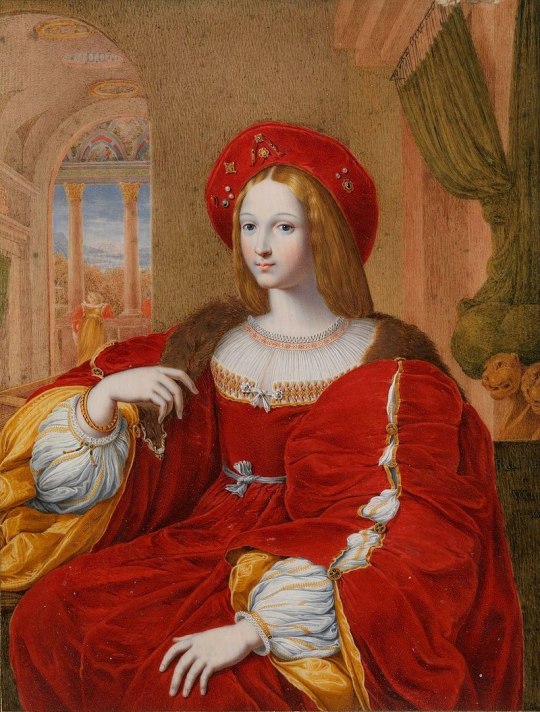

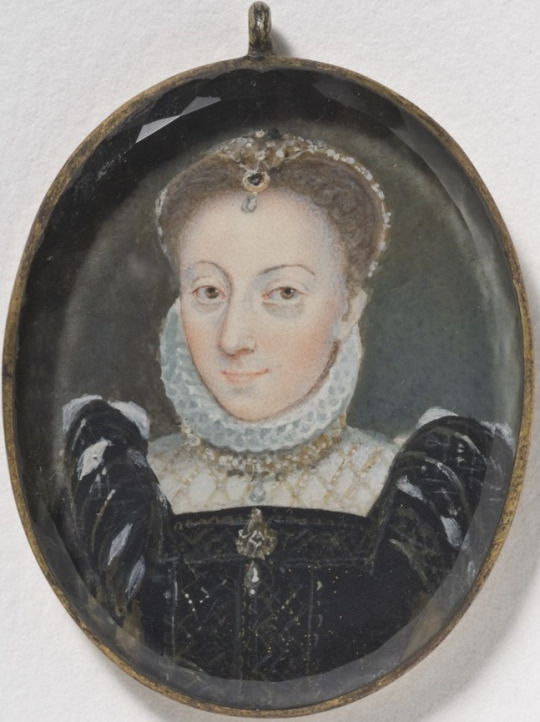
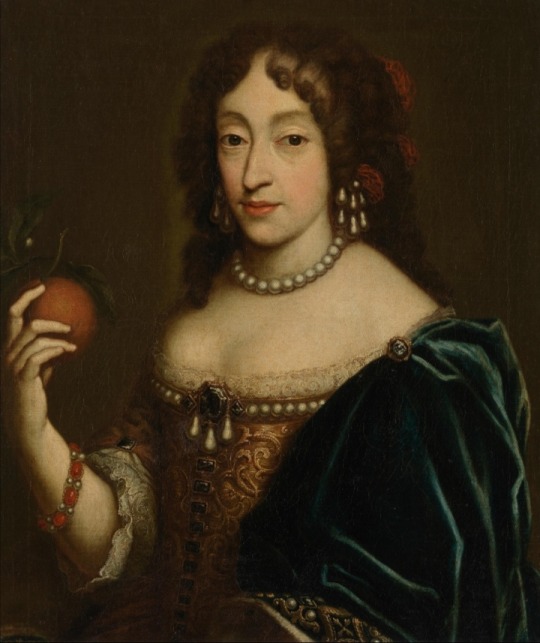
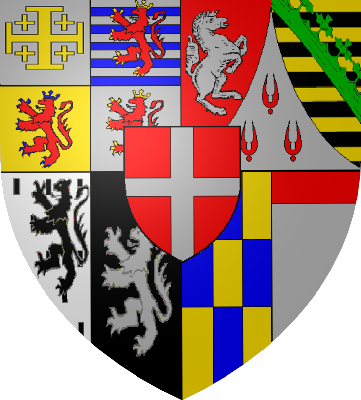

Royal Birthdays for today, November 6th:
Agrippina the Younger, Roman Empress, 15
Joanna of Castile, Queen of Castile and León, 1479
Suleiman the Magnificent, Ottoman Sultan, 1494
Karin Månsdotter, Queen of Sweden, 1550
Henriette Adelaide of Savoy, Electress of Bavaria, 1636
Catherine Beatrice, Princess of Savoy, 1636
Charles II, King of Spain, 1661
#Agrippina the Younger#joanna of castile#suleiman the magnificent#karin mansdotter#charles ii#Henriette Adelaide of Savoy#Catherine Beatrice of Savoy#long live the queue#royal birthdays
31 notes
·
View notes
Text
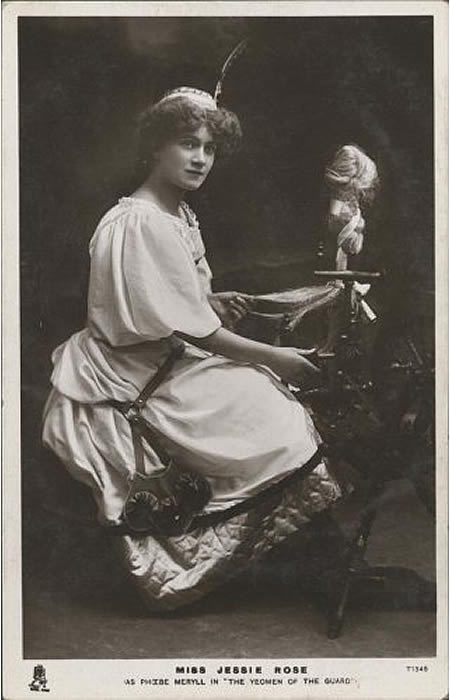

Jessie Rose & Béatrice Meredith as Phoebe Meryll in Yeomen of the Guard, 1906-1909
#vintage photography#phoebe meryll#jessie rose#beatrice meredith#1900's#the yeomen of the guard#gilbert and sullivan#savoy theatre#postcards#yeomen of the guard#gilbert & sullivan
5 notes
·
View notes
Text








a-ha - "Move to Memphis" (1991)
directed by Erick Ifergan
#a-ha#move to memphis#1991#morten harket#magne furuholmen#paul waaktaar-savoy#beatrice dalle#erick Ifergan#music video#nineties#90s music#pop rock#90s pop#1990s#90s gifs#music gifs
5 notes
·
View notes
Text
Evil Trans Swag Competitor List
I'm not posting a bracket because I'm still making it and it's by hand, but here are the characters who are going to be in the tournament! The match-ups will be randomly generated and there are 64 characters. The polls will last a week. Alright enough of that here is the list (in alphabetical order bc yeah)
Thanks everyone for submissions and the voter fraud!!
Akaza (Demon Slayer)
Akechi Goro (Persona 5)
Alexis Meade (Ugly Betty)
Artemis Fowl (Artemis Fowl series)
Ashiok (Magic the Gathering)
Beatrice (Umineko: When They Cry)
Bloodraven (Tales of Dunk and Egg)
Buggy the Clown (One Piece)
Cesar (Big Top Burger)
Sir Crocodile (One Piece)
Dio Brando (Jojo's Bizarre Adventure)
Dr. Frank-N-Furter (Rocky Horror Picture Show)
Dr. Starline (IDW Sonic)
Dracule Mihawk (One Piece)
Edward Nygma/The Riddler (DC Comics)
Elendira (Trigun)
Envy (Full Metal Alchemist)
Ghirahim (The Legend of Zelda: Skyward Sword)
Giselle Gewelle (Bleach)
Goblin King Jareth (Labyrinth)
Golden-Winged Peng (LEGO Monkie Kid)
Grelle Sutcliff (Black Butler)
Grima (Fire Emblem)
Heinz Doofenshmirtz (Phineas and Ferb)
Henry Cooldown (No More Heroes)
HIM (Powerpuff Girls)
Hubert von Vestra (Fire Emblem: Three Houses)
Ienaga Kano (Golden Kamuy)
Infinite the Jackal (Sonic the Hedgehog series)
James (Pokemon)
Jessie (Pokemon)
Jester Karture (Fate/Strange Fake)
John Hart (Torchwood)
Joseph Bertrand III (inFAMOUS 2)
Lestat de Lioncourt (The Vampire Chronicles)
Liquid Snake/Eli (Metal Gear Solid)
Loam Arnault (Entropic Float)
Merasmus (Team Fortress 2)
Metal Sonic (Sonic the Hedgehog series)
Millions Knives (Trigun)
Moot Tarbella (Epithet Erased)
Mordred Pendragon (The Mechanisms - High Noon Over Camelot)
Mutsuki Tooru (Tokyo Ghoul)
Neferpitou (Hunter x Hunter)
Orochimaru (Naruto)
Pigma Dengar (Star Fox)
Revolver Ocelot (Metal Gear Solid series)
Scaramouche/Wanderer (Genshin Impact)
Scourge the Hedgehog (Sonic the Hedgehog series)
SCP-004-J/Stanley Nichols (SCP Foundation)
Sephiroth (Final Fantasy VII)
Serafine Savoy (Lackadaisy)
Shamura (Cult of the Lamb)
Shiromori (Mystery Skulls Animated)
Silver (Pokemon)
Suzuki Emiri (High-Rise Invasion)
Sweet Tooth (Moshi Monsters)
The Leading Light (HLVRV)
Turkey (Dorohedoro)
Tyki Mikk (D. Gray Man)
Uncle Wiley (Hatchetfield)
Vaati (The Legend of Zelda series)
Vegas Theerapanyakul (Kinnporsche: The Series)
Yoshiya "Joshua" Kiryu (The World Ends With You)
83 notes
·
View notes
Text
Wives and Daughters of Holy Roman Emperors: Age at First Marriage
I have only included women whose birth dates and dates of marriage are known within at least 1-2 years, therefore, this is not a comprehensive list.
This list does not include women who died before their husbands were crowned Emperor. It spans between the beginning of the reign of Otto I (962 CE) and the end of the reign of Francis II (1806 CE).
The average age at first marriage among these women was 17. The sample size was 91 women. The youngest bride, Bianca Maria Sforza, was just 2 years old when she wed her first husband, who was himself 9. The oldest bride, Constance of Sicily, was 32 years old.
Adelaide of Italy, wife of Otto I, HRE: age 15 when she married Lothair II, King of Italy, in 947 CE
Liutgarde of Saxony, daughter of Otto I, HRE: age 15 when she married Conrad the Red, Duke of Lorraine, in 947 CE
Theophanu, wife of Otto II, HRE: age 17 when she married Otto in 972 CE
Cunigunde of Luxembourg, wife of Henry II, HRE: age 24 when she married Henry in 999 CE
Gisela of Swabia, wife of Conrad II, HRE: age 12 when she married Brun I of Brunswick in 1002 CE
Agnes of Poitou, wife of Henry III, HRE: age 18 when she married Henry in 1043 CE
Matilda of Germany, daughter of Henry III, HRE: age 11 when she married Rudolf of Rheinfelden in 1059 CE
Judith of Swabia, daughter of Henry III, HRE: age 9 when she married Solomon, King of Hungary in 1063 CE
Bertha of Savoy, wife of Henry IV, HRE: age 15 when she married Henry in 1066 CE
Agnes of Waiblingen, daughter of Henry IV, HRE: age 14 when she married Frederick I, Duke of Swabia in 1086 CE
Empress Matilda, wife of Henry V, HRE: age 12 when she married Henry in 1114 CE
Beatrice I, Countess of Burgundy, wife of Frederick I, HRE: age 13 when she married Frederick in 1156 CE
Beatrice, daughter of Frederick I, HRE: age 10 when she married Guillaume II, Count of Chalon in 1173 CE
Constance, Queen of Sicily, wife of Henry IV, HRE: age 32 when she married Henry IV in 1186 CE
Beatrice of Swabia, first wife of Otto IV, HRE: age 14 when she married Otto in 1212 CE
Maria of Brabant, second wife of Otto IV, HRE: age 24 when she married Otto in 1214 CE
Constance of Aragon, first wife of Frederick II, HRE: age 19 when she married Emeric of Hungary in 1198 CE
Isabella II of Jerusalem, second wife of Frederick II, HRE: age 13 when she married Frederick in 1225 CE
Isabella of England, third wife of Frederick II, HRE: age 21 when she married Frederick in 1235 CE
Margaret of Sicily, daughter of Frederick II, HRE: age 14 when she married Albert II, Margrave of Meissen in 1255 CE
Anna of Hohenstaufen, daughter of Frederick II, HRE: age 14 when she married John III Doukas Vatatzes in 1244 CE
Marie of Luxembourg, daughter of Henry VII, HRE: age 18 when she married Charles IV of France in 1322 CE
Beatrice of Luxembourg, daughter of Henry VII, HRE: age 13 when she married Charles I of Hungary in 1318 CE
Margaret II, Countess of Hainaut, wife of Louis IV, HRE: age 13 when she married Louis in 1324 CE
Matilda of Bavaria, daughter of Louis IV, HRE: age 10 when she married Frederick II, Margrave of Meissen in 1323 CE
Beatrice of Bavaria, daughter of Louis IV, HRE: age 12 when she married Eric XII of Sweden in 1356 CE
Anna von Schweidnitz, wife of Charles IV, HRE: age 14 when she married Charles in 1353 CE
Elizabeth of Pomerania, wife of Charles IV, HRE: age 16 when she married Charles in 1378 CE
Margaret of Bohemia, daughter of Charles IV, HRE: age 7 when she married Louis I of Hungary in 1342 CE
Catherine of Bohemia, daughter of Charles IV, HRE: age 14 when she married Rudolf IV, Duke of Austria in 1356 CE
Elisabeth of Bohemia, daughter of Charles IV, HRE: age 8 when she married Albert III, Duke of Austria in 1366 CE
Anne of Bohemia, daughter of Charles IV, HRE: age 16 when she married Richard II of England in 1382 CE
Margaret of Bohemia, daughter of Charles IV, HRE: age 8 when she married John III, Burgrave of Nuremburg in 1381 CE
Barbara of Cilli, wife of Sigismund, HRE: age 13 when she married Sigismund in 1405 CE
Elizabeth of Luxembourg, daughter of Sigismund, HRE: age 13 when she married Albert II of Germany in 1422 CE
Eleanor of Portugal, wife of Frederick III, HRE: age 18 when she married Frederick in 1452 CE
Kunigunde of Austria, daughter of Frederick III, HRE: age 22 when she married Albert IV, Duke of Bavaria in 1487 CE
Bianca Maria Sforza, wife of Maximilian I, HRE: age 2 when she married Philibert I, Duke of Savoy in 1474 CE
Margaret of Austria, daughter of Maximilian I, HRE: age 17 when she married John, Prince of Asturias in 1497 CE
Barbara von Rattal, daughter of Maximilian I, HRE: age 15 when she married Siegmund von Dietrichstein in 1515 CE
Dorothea of Austria, daughter of Maximilian I, HRE: age 22 when she married Johan I of East Frisia in 1538 CE
Isabella of Portugal, wife of Charles V, HRE: age 23 when she married Charles in 1526 CE
Maria of Austria, daughter of Charles V, HRE: age 20 when she married Maximilian II, HRE in 1548 CE
Joanna of Austria, daughter of Charles V, HRE: age 17 when she married John Manuel, Prince of Portugal in 1552 CE
Margaret of Parma, daughter of Charles V, HRE: age 14 when she married Alessandro de’ Medici, Duke of Florence, in 1536 CE
Elizabeth of Austria, daughter of Ferdinand I, HRE: age 16 when she married Sigismund II Augustus of Poland in 1543 CE
Anna of Austria, daughter of Ferdinand I, HRE: age 17 when she married Albert V, Duke of Bavaria in 1546 CE
Maria of Austria, daughter of Ferdinand I, HRE: age 15 when she married William of Julich-Cleves-Berg in 1546 CE
Catherine of Austria, daughter of Ferdinand I, HRE: age 16 when she married Francesco III Gonzaga in 1559 CE
Eleanor of Austria, daughter of Ferdinand I, HRE: age 27 when she married William I, Duke of Mantua in 1561 CE
Barbara of Austria, daughter of Ferdinand I, HRE: age 26 when she married Alfonso II d’Este in 1565 CE
Joanna of Austria, daughter of Ferdinand I, HRE: age 18 when she married Francesco I de’ Medici in 1565 CE
Anna of Austria, daughter of Maximilian II, HRE: age 21 when she married Philip II of Spain in 1570 CE
Elisabeth of Austria, daughter of Maximilian II, HRE: age 16 when she married Charles IX of France in 1570 CE
Anna of Tyrol, wife of Matthias, HRE: age 26 when she married Matthias in 1611 CE
Eleonora Gonzaga the Elder, wife of Ferdinand II, HRE: age 24 when she married Ferdinand in 1622 CE
Maria Anna of Austria, daughter of Ferdinand II, HRE: age 25 when she married Maximilian I, Elector of Bavaria in 1635 CE
Cecilia Renata of Austria, daughter of Ferdinand II, HRE: age 26 when she married Władysław IV of Poland in 1637 CE
Maria Anna of Spain, wife of Ferdinand III, HRE: age 25 when she married Ferdinand in 1631 CE
Maria Leopoldine of Austria, wife of Ferdinand III, HRE: age 16 when she married Ferdinand in 1648 CE
Eleonora Gonzaga the Younger, wife of Ferdinand III, HRE: age 21 when she married Ferdinand in 1651 CE
Mariana of Austria, daughter of Ferdinand III, HRE: age 15 when she married Philip IV of Spain in 1649 CE
Eleonore of Austria, daughter of Ferdinand III, HRE: age 17 when she married Michael I of Poland in 1670 CE
Maria Anna Josepha of Austria, daughter of Ferdinand III, HRE: age 24 when she married Johann Wilhelm II, Elector Palatine in 1678 CE
Margaret Theresa of Spain, wife of Leopold I, HRE: age 15 when she married Leopold in 1666 CE
Claudia Felicitas of Spain, wife of Leopold I, HRE: age 20 when she married Leopold in 1673 CE
Eleonore Magdalene of Neuberg, wife of Leopold I, HRE: age 21 when she married Leopold in 1676 CE
Maria Antonia of Austria, daughter of Leopold I, HRE: age 16 when she married Maximilian II Emanuel, Elector of Bavaria in 1685 CE
Maria Anna of Austria, daughter of Leopold I, HRE: age 25 when she married John V of Portugal in 1708 CE
Wilhelmine Amalie of Brunswick, wife of Joseph I, HRE: age 26 when she married Joseph in 1699 CE
Maria Josepha of Austria, daughter of Joseph I, HRE: age 20 when she married Augustus III of Poland in 1719 CE
Maria Amalia of Austria, daughter of Joseph I, HRE: age 21 when she married Charles VII, HRE in 1722 CE
Elisabeth Christine of Brunswick, wife of Charles VI, HRE: age 17 when she married Charles in 1708 CE
Maria Theresa of Austria, daughter of Charles VI, HRE: age 19 when she married Francis I, HRE in 1736 CE
Maria Anna of Austria, daughter of Charles VI, HRE: age 26 when she married Charles Alexander of Lorraine in 1744 CE
Maria Antonia of Bavaria, daughter of Charles VII, HRE: age 23 when she married Frederick Christian, Elector of Saxony in 1747 CE
Maria Anna Josepha of Bavaria, daughter of Charles VII, HRE: age 20 when she married Louis George of Baden-Baden in 1755 CE
Maria Josepha of Bavaria, daughter of Charles VII, HRE: age 26 when she married Joseph II, HRE in 1765 CE
Maria Christina, daughter of Francis I, HRE: age 24 when she married Albert Casimir, Duke of Teschen in 1766 CE
Maria Amalia, daughter of Francis I, HRE: age 23 when she married Ferdinand I, Duke of Parma in 1769 CE
Maria Carolina, daughter of Francis I, HRE: age 16 when she married Ferdinand IV & III of Sicily in 1768 CE
Maria Antonia, daughter of Francis I, HRE: age 14 when she married Louis XVI of France in 1770 CE
Maria Josepha of Bavaria, wife of Joseph II, HRE: age 26 when she married Joseph in 1765 CE
Maria Luisa of Spain, wife of Leopold II, HRE: age 19 when she married Leopold in 1764 CE
Maria Theresa of Austria, daughter of Leopold II, HRE: age 20 when she married Anthony of Saxony in 1787 CE
Maria Clementina of Austria, daughter of Leopold II, HRE: age 20 when she married Francis I of Sicily in 1797 CE
Maria Theresa of Naples, wife of Francis II, HRE: age 18 when she married Francis in 1790 CE
Marie Louise, daughter of Francis II, HRE: age 19 when she married Napoleon I of France in 1810 CE
Maria Leopoldina, daughter of Francis II, HRE: age 20 when she married Pedro I of Brazil and IV of Portugal in 1817 CE
Clementina, daughter of Francis II, HRE: age 18 when she married Leopold of Salerno in 1816 CE
Marie Caroline, daughter of Francis II, HRE: age 18 when she married Frederick Augustus of Saxony in 1819 CE
34 notes
·
View notes
Photo

"I am Manfredi, grandson to the Queen
Costanza: whence I pray thee, when return'd,
To my fair daughter go, the parent glad
Of Aragonia and Sicilia's pride;
And of the truth inform her, if of me
Aught else be told. [...]
Look therefore if thou canst advance my bliss;
Revealing to my good Costanza, how
Thou hast beheld me, and beside the terms
Laid on me of that interdict; for here
By means of those below much profit comes.
Dante Alighieri, Divine Comedy, Purgatory, III, 112-117 & 141-145
Costanza was born around 1249 to Manfredi of Sicily and his first wife Beatrice of Savoy ("et filiam suam Constantiam, quam ex prima consorte sua Beatrice filiam quondam A. Comitis Sabaudiae"). The exact date is unknown, but historian Saba Malaspina attests that when she was born, her grandfather was still alive (“imperatore vivente"). As for the place, it might have been one of the Apulian castles where the Emperor settled down in the last period of his life.
Her wet nurse was Bella d’Amico, mother of admiral Roger of Lauria. Bella, while she was alive, never parted from Costanza, acting like a mother and confidante, especially since Beatrice of Savoy, Manfredi’s first wife, had died when her daughter was just months old.
Nothing is known about Costanza’s childhood. She’s first mentioned when Berthold von Hohenburg asked for her hand on behalf of his nephew Januarius, son of his brother Diepold VIII. Berthold had married Isotta Lancia, cousin of Manfredi’s mother Bianca, and certainly intended to deepen his relationship with the Hohenstaufen’s family. Manfredi, on the other hand, was strenghtening his position (to the point he would be crowned on August 1258 King of Sicily, despite the true heir, his nephew Corradino was still very much alive, although far away in Germany) and so he could afford to reject this marriage proposal.
From a princess of low importance (despite the pretentious name which honored her great-grandmother Costanza I), Costanza soon became a valuable asset and, until Manfredi’s second marriage to Epirote princess Elena Angelina Doukaina, her father’s heir. The Sicilian King then started looking for an important match for his daughter, and ended up selecting Peter, son of Aragonese King James I.
Marriage agreements required that Manfredi supplied his daughter of a dowry of 50000 golden ounces (worth in gold, silver and jewels). On the other hand, the Aragonese crown committed to return the dowry to her family if Costanza were to die without heirs. She would also act as regent for her children (until they were 20 years old) in case Peter were to die before her. In addition, the Sicilian princess was given personal ownership of the city of Girona and the castle of Cotlliure.
Still, the future union presented some problems. First of all, that 50000 golden ounces dowry was indeed a large amount. Manfredi had an hard time collecting it (he had to increase taxes and that spread discontent among the population) and a lot of time passed before the Aragonese crown could collect it (alongside with the bride). The Papacy was obviously against this marriage, and Urban IV asked James I to give up to this union to avoid disgracing his House. Furthermore, in order to save the plans of the future marriage between his daughter Isabella and the heir to the French throne, James had to promise King Louis IX to not support Manfredi in his fight against the Papacy, as well as not helping Provençal rebel Bonifaci VI de Castellana against Charles of Anjou (the King’s younger brother).
Despite all the external pressure, James didn’t give up to the Sicilian match and on July 13th 1262, Peter and Costanza got married in the church of Notre-Dame des Tables (Montpellier). The difference between the lavish Hohenstaufen court and the more simple Aragonese one was huge (“And the said King Manfred lived more magnificently that any lord in the world, and with greater doings, and with greater expenditure”), but thanks to the accounting records of the time, we know that James and Peter tried their best to meet Costanza’s need, purchasing large amounts of luxury items. Since the incomes deriving from Girona and Cotlliure weren’t enough, she was given an annual pension worthy of 30000 Real de Valencia (a type of billon coin) which also soon wasn’t enough to cover the expenses.
Following the death of Manfredi in the Battle of Tagliacozzo (1266) against Charles of Anjou, many of his former supporters (or simply people linked to him, like the former Nicaean Empress as well as his sister Costanza) fled the Kingdom of Sicily and took refuge in Aragon. The death of Corradino (executed in Naples in 1268 by order of Charles after the Battle of Benevento) and the fact that Manfredi’s sons from Helena Doukaina were just children and in French hands (they will die in captivity years later), made Costanza the only legitimate heir to the Sicilian crown. Starting this moment Costanza started being referred as queen (not infanta or madama) in the documents of the Aragonese Chancellery.
In 1276 James I died, and so Peter was crowned king of Aragon. In the meantime, Costanza had already given birth in 1265 (November 4th) to the firstborn and heir, Alfonso. Followed by another male, James (April 10th 1267), and then Isabella, future Queen consort of Portugal (1271), Frederick (December 13th 1272), Yolanda (1273) and finally Peter (1275). According to historian Muntaner, although it wasn’t a love marriage, Peter and Costanza came to care for each a lot and “there were never was so great love between husband and wife as there was between them, and always had been”.
On Easter 1282, Sicilians started their revolt against the French rule, starting the so called Sicilian Vespers. Peter was quick to reclaim the crown of Sicily and Apulia on behalf of his wife. To the eyes of many Sicilian nobles the King of Aragon could be considered their legitimated master due his marriage to Queen Costanza (”nostre natural senyor, per raho de la regina e de sos fills” ). Before leaving headed for Africa (from where he would launch his invasion of Sicily), Peter named Costanza and their son Alfonso regents of the Kingdom of Aragon during his absence. As soon as he took possession of the island, Peter asked his wife and their children James, Frederick and Yolanda to join him. When the Queen arrived in Trapani in the spring of 1283, she received a warm welcome and was saluted by the people as their natural leader (”cela qui era lur dona natural”; Bernat Desclot, Llibre del rei en Pere d'Aragó e dels seus antecessors passats, ch. 103).
It is around this period that her strained relationship with lady-in-waiting and de facto second lady of the Island, Macalda di Scaletta (wife of Alaimo da Lentini, Grand Justiciar of the Kingdom of Sicily), was born. Macalda, who is described by historical sources as an ambitious and greedy woman, had tried to seduce Peter of Aragon, but without success. Since the King had declared himself devoted to his wife, the Sicilian baroness developed a burning hate towards her rival, the Queen.
In Messina, Costanza could finally embrance her husband again, but their meeting only lasted three days and it was their last. The King named his wife Regent of the Kingdom of Sicily (“Quant lo rey hac estat ab sa muller e ab sos infants en la ciutat de Mecina, e hac stablit sos balles e sos vicaris per tota Cecilia, si los feu comandament que tots fessen lo manament de la reyna e de son fill En Jaume, axi com perell, e comana la reyna als homens de Cecilia e de Mecina, e sos fills”) and returned to Aragon as his rival, Charles of Anjou, had proposed a trial by combat (who would never take take place) to be ideally fought in Bordeaux to decide the fate of the contended Kingdom. Peter died two years later in Villafranca del Penedès (Catalonia), on November 11th 1285.
Before leaving Sicily, Peter had declared that the Kingdom wouldn’t be merged into the Aragonese-Catalan territories, mantaining his autonomy, and that in thet future the succession of the two reigns would be handled separately, specifically with the Sicilian throne bequeated to the second son (at that time, James, already named Lieutenant of the Realm).
With Peter dead, Costanza didn’t choose to rule over Sicily by herself despite being its titular queen, but, as it had already been decided, relinquished her rights to her second son James (although she would keep managing the island on his behalf), while Alfonso succeeded his father. In accord to the pre-nuptial arrangements, the Dowager Queen supported her teen son in the matter of ruling the Kingdoms he had inherited.
In 1284, Costanza’s milk brother, Roger of Lauria carried out a successful expedition in the Gulf of Naples. The admiral captured Charles of Salerno, the Angevin heir, and took him in Messina, where he was saved by the angry mob thanks to the intervention of the Dowager Queen. During the same raid, Lauria had freed Princess Beatrice of Hohenstaufen, Costanza’s younger half-sister. The Queen soon put her unfortunate sister under her protection, arranging Beatrice’s marriage with Costanza’s half-nephew, Manfredo IV Marquis of Saluzzo. The wedding was celebrated in October 1286 in Messina, and during the celebration the Princess had to give up on her rights to the Sicilian throne.
In 1290 she deployed troops to defend the city of Acre, but given the excommunication of Pope Martin IV against Peter III of Aragon and the Sicilian people, those troops were sent back. The following year, 1291, Acre would be conquered by Mamluk forces.
Also that year, Alfonso III died heirless. James succeeded him as King of Aragon, Valencia and Majorca, Count of Roussillon, Cerdanya and Barcelona, and, in normal circumstances, his brother Frederick would have inherited the Sicilian Crown, but James had other ideas. The new King kept Sicily for himself, naming Frederick Lieutenant of the Realm. The dispossessed Prince then left the Kingdom headed to Sicily, where he joined his mother Costanza.
Her son’s death represented a turning point in her life. Although already a pious woman, she started pondering about a future in the cloister and retired in a Clarisse nunnery she had personally founded in Messina.
In 1295, James signed the Treaty of Anagni, an accord signed by Boniface VIII, James II of Aragon, James II of Majorca, Charles II of Anjou and Philip IV of France, which should have put to an end to the Vespers War. As part of the terms, the King of Aragon had to return the island of Sicily to the Pope (let’s remember the fact that officially, since Norman times, the Kingdom of Sicily was actually one of the Papacy’s many fiefs, and that its lords were just lieutenants), who would in turn give it to Charles of Anjou, in exchange for the annulment of the excommunication weighing over him and the concession of the licentia invadendi (the permission to invade) concerning the islands of Sardinia and Corsica. The treaty required moreover a double dinastic union, James would have married Princess Blanche of Anjou, while her brother Robert was wed to James’ sister Yolanda.
There was someone in particular, though, who wasn’t happy about this settlements. Backed up by the Sicilian population who refused to return under French domination, Infante Frederick was crowned King of Sicily in Palermo on March 25th 1296, de facto nullifyng any attempt to stop the war.
This had a huge impact in his mother’s life. Unlike her son, Costanza had always recognized the Papal authority. By not accepting the treaty’s terms, Frederick had in fact rebelled against the Pope (not mentioning his own brother). Costanza chose then not to support him and, because of this, she had to leave Sicily since, as Papal emissaries put it, if she stayed she could be considered an accomplice (“E madona la regina Costança fo absolta per lo Papa, é tots aquells qui eren de sa companyia , si que tots dies oya missa; que axi ho hach a fer lo Papa, per convinença a les paus quel senyor rey Darago feu ab ell. Per que madona la regina parti de Sicilia ab deu galees , e anassen en Roma per pelegrinatge” in Crónica de Ramon Muntaner, ch CLXXXV).
Together with her longtime supporters, Giovanni da Procida and Roger of Lauria, in february 1297, she traveled to Rome where the Pope had promised to economically support her staying in Rome (although apparently it was a short-lived promise) and where she witnessed her daughter Yolanda’s marriage to Robert of Anjou. In 1299 the Dowager Queen returned to Catalonia and died in Barcelona on April 8th 1302 (“Non sine cordis amaritudine vobis presentibus intimamus quod die Veneris Sancta, quasi in media nocte, serenissima et karissima domina et mater nostra domina Constancia, fidelis recordacionis Aragonum regina, diem clausit extremum, ex quo tanto nos pungit doloris ictus acerbus quanto per eius obitum sentimus nos tante matris solacio destitutos.” in La muerte en la Casa Real de Aragón..., p.20).
Aside from many donations to various religious houses, in her will (dated february 1st 1299) Queen Costanza would include a small bequest in favor of her son Frederick with the condition he had to make peace with the Pope, observing thus the terms of the Treaty of Anagni.
She was buried wearing the Franciscan habit in the convent of St. Francis in Barcelona (“E a Barcelona ella fina , e lexas a la casa dels frares menors, ab son fill lo rey Nanfos, e muri menoreta vestida ” Crónica de Ramon Muntaner, ch CLXXXV). In 1852 her remains would be moved to Barcelona Cathedral by order of Queen Isabella II of Spain.
Sources
Claramunt Rodríguez Salvador, Alfonso III de Aragón
Corrao Pietro, PIETRO I di Sicilia, III d'Aragona in Dizionario Biografico degli Italiani, vol. 83
Desclot Bernat, Crónica
Ferrer Mallol María Teresa, Constanza de Sicilia
Hinojosa Montalvo José, Jaime II
La Mantia Giuseppe, FEDERICO II d'Aragona, re di Sicilia in Enciclopedia Italiana
La muerte en la Casa Real de Aragón Cartas de condolencia y anunciadoras de fallecimientos (siglos XIII al XVI), ARCHIVO DE LA CORONA DE ARAGÓN
Malaspina Saba, Rerum Sicularum
Muntaner Ramon, Crónica / translation by Lady Goodenough
Sicily/Naples: Counts & Kings
Walter Ingeborg, COSTANZA di Svevia, regina d'Aragona e di Sicilia in Dizionario Biografico degli Italiani, vol. 30
#historicwomendaily#history#women#history of women#historical women#costanza ii#House of Hohenstaufen#house of aragon and sicily#peter iii of aragon#norman swabian sicily#aragonese-spanish sicily#people of sicily#women of sicily#vespri siciliani#myedit#historyedit
62 notes
·
View notes
Text
docuseries on the savoy family and how vittorio emanuele was accused of murder, directed by donna beatrice borromeo arese taverna casiraghi
11 notes
·
View notes
Text
Trixie

Trixie is a bold and free-spirited girl’s name of Latin origin. It could be originated from the Latin word Beatus, meaning ‘bringer of joy’, or ‘she who brings happiness’. Trixie could also be derived from the Latin word viator, meaning ‘voyager’, or ‘traveler.’
The name is considered a diminutive of names, such as Beatrice, Beatrix, or Patricia. Trixie is also associated with several saintly figures. Beatrice of Silva was a Portuguese noblewoman who founded the monastic Order of the Immaculate Conception. She was imprisoned in a tiny cell and finally escaped her imprisonment and took refuge in the Dominican Second Order monastery of
nuns in Toledo. She is the patron saint of prisoners and is still venerated in the Monastery of the Immaculate Conception.
Blessed Beatrice d’Este was the daughter of Azzo VI of the Este family by his second wife, Sophia Eleanor, daughter of Humbert III, Count of Savoy. Beatrice became a Benedictine nun at Solarola near Padua at the age of fourteen, and in 1221 founded a religious house at the site of an abandoned monastery in Gemmola.
The name Trixie is often used as a nickname for Patricia. Hence the name is associated with Saint Patricia of Naples and might have been a descendant of Constantine the Great or related to the Roman Emperor.
Trixie can have several variants, including Trixi and Trixy. Trix can make a cute nickname for Trixie.
The name has left a mark on popular culture. Trixie was given to several memorable fictional characters. Thelma “Trixie” Norton is a notable character in the television sitcom The Honeymooners. She is Ed’s wife and the best friend of Alice. She is depicted as an ordinary housewife and was portrayed by Joyce Randolph. Trixie is a blue plastic Triceratops in Toy Story 3 and served as the main character in Toy Story That Time Forgot and is one of the toys owned by Bonnie.
Trixie is wearing a civil war dress that is teal silver and cream. Her reddish hair is put up in the back. She has teal necklace and earrings also. DON'T FORGET HER MESHES SO SHE WILL SHOW UP CORRECTLY.
MESHES
The Arabian Nights Collection earrings and necklace-MURPHY
Scarlett O'hara dress-simna
Scafati Boots-Madlen
FemaleHair_AndrineFlowers and hair V2-simstrouble
DOWNLOAD
#sims 4#the sims 4#sims 4 cc#custom content#@madlen#@murphy#@simstrouble#@simna#@lana cc finds#@loveccfinds#@sim 4 finds#civil war
4 notes
·
View notes
Text
here’s my official starter call post. like for a starter from one of the listed muses below, most have more information on my muse page. i’ll have a peek at your wishlist for a general vibe but otherwise i’m gonna wing it. they will likely vary in size!
beatrice griswald, 21, bisexual, she/her, sarah desjardins fc.
dizzy underwood, 24, lesbian, she/her, zendaya fc.
dove velazquez, 19, bisexual, she/her, jenna ortega fc.
edward ‘dawson’ dawson ii, 22, bisexual, he/him, spencer house fc.
griffin walston, 31, straight, he/him, bo burnham fc.
nico jones, 24, straight, he/him, mason gooding fc.
stevie poole, 21, lesbian, she/her, erana james fc.
vasilisa steele, 23, bisexual, she/her, kennedy mcmann fc.
yvonne pinewood, 26, lesbian, she/her, jasmin savoy brown fc.
alina mooney, 27, bisexual, she/her, khadijha red thunder fc.
jacob welch, 21, straight, he/him, milo manheim fc.
lita westmore, 26, lesbian, they/them, liv hewson fc.
sabine howell, 19, bisexual, she/her, zoe colletti fc.
6 notes
·
View notes
Photo

Constance II of Sicily (c. 1249 – 9 April 1302) was Queen consort of Aragon as the wife of Peter III of Aragon and a pretender to the Kingdom of Sicily from 1268 to 1285. She was the only daughter of Manfred of Sicily and his first wife, Beatrice of Savoy.
9 notes
·
View notes
Text
shoutout to ramon berenguer IV count of provence and countess beatrice of savoy for having four daughters ALL of whom became queens. no one’s winning like them
2 notes
·
View notes
Text


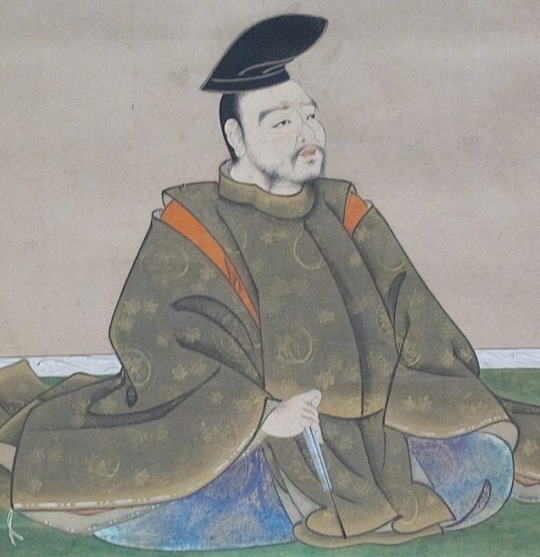
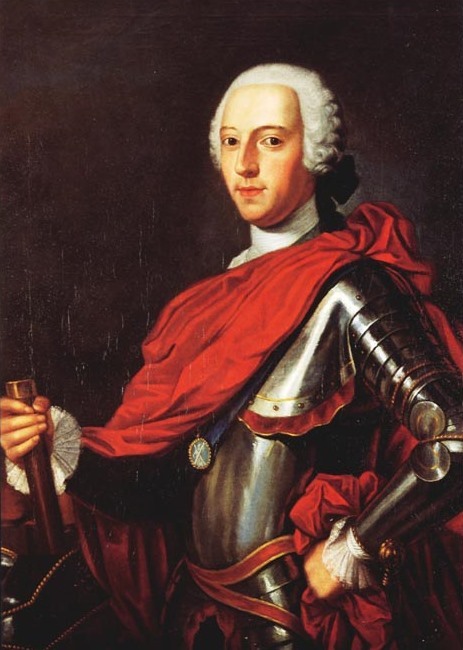
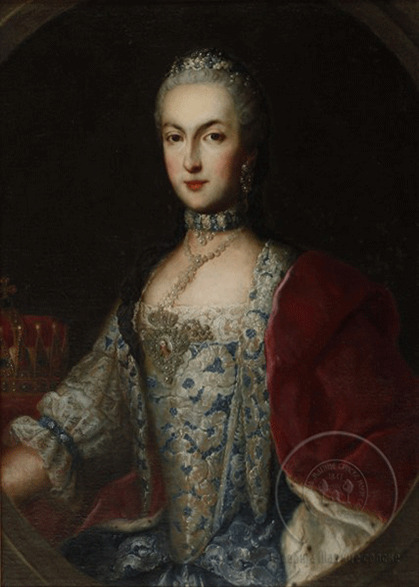
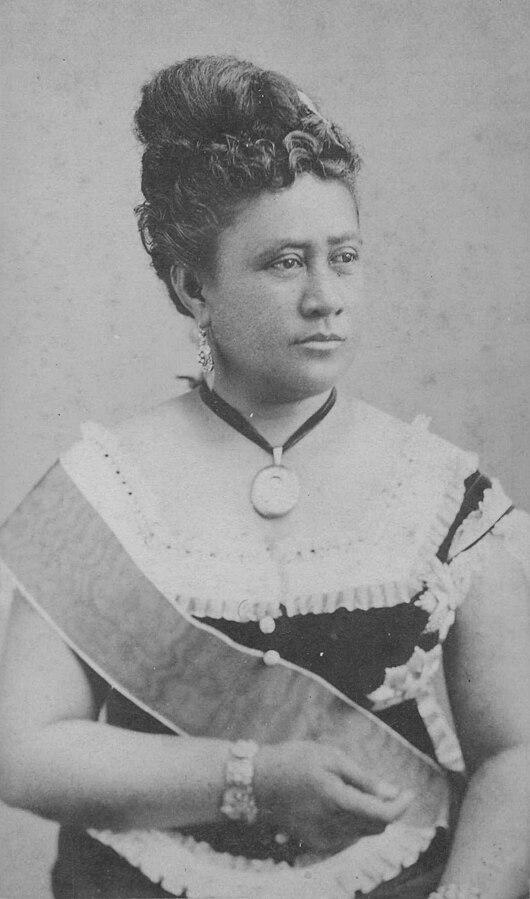

Royal Birthdays for today, December 31st:
Eleonora Gonzaga, Duchess of Urbino, 1493
Beatrice of Portugal, Duchess of Savoy, 1504
Go-Yozei, Emperor of Japan, 1572
Charles Edward Stuart, The Young Pretender, 1720
Isabella of Parma, wife of Joseph II of Austria, 1741
Kapiʻolani, Queen of the Hawaiian Islands, 1834
Princess Victoria Adelaide of Schleswig-Holstein, Duchess of Saxe-Coburg and Gotha, 1885
#isabella of parma#eleonora gonzaga#beatrice of portugal#emperor Go-Yozei#charles edward stuart#Kapiʻolani#queen Kapiʻolani#Victoria Adelaide of Schleswig-Holstein#royal birthdays#long live the queue
21 notes
·
View notes